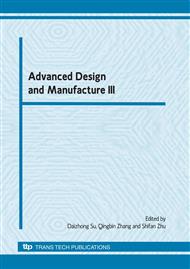p.115
p.119
p.124
p.128
p.133
p.137
p.141
p.145
p.149
Automotive Crashworthiness Optimization Using Energy Flow Based Variable Screening
Abstract:
A variable screening method based on energy flow analysis is provided for significant variables selection in crashworthiness optimizing. Two quantities, significance and specific energy absorption, are used to screen design variables. These quantities are calculated from energy relation matrix and energy absorption of parts. Energy relation matrix is built from finite element crash simulation result to describe energy flow path in parts during impact. The method is applied in the case of a car engine room under frontal impact. Optimization for lightweight using response surface method is performed on the reduced variable set at a relatively low computational cost.
Info:
Periodical:
Pages:
133-136
Citation:
Online since:
November 2010
Authors:
Keywords:
Price:
Сopyright:
© 2011 Trans Tech Publications Ltd. All Rights Reserved
Share:
Citation:


